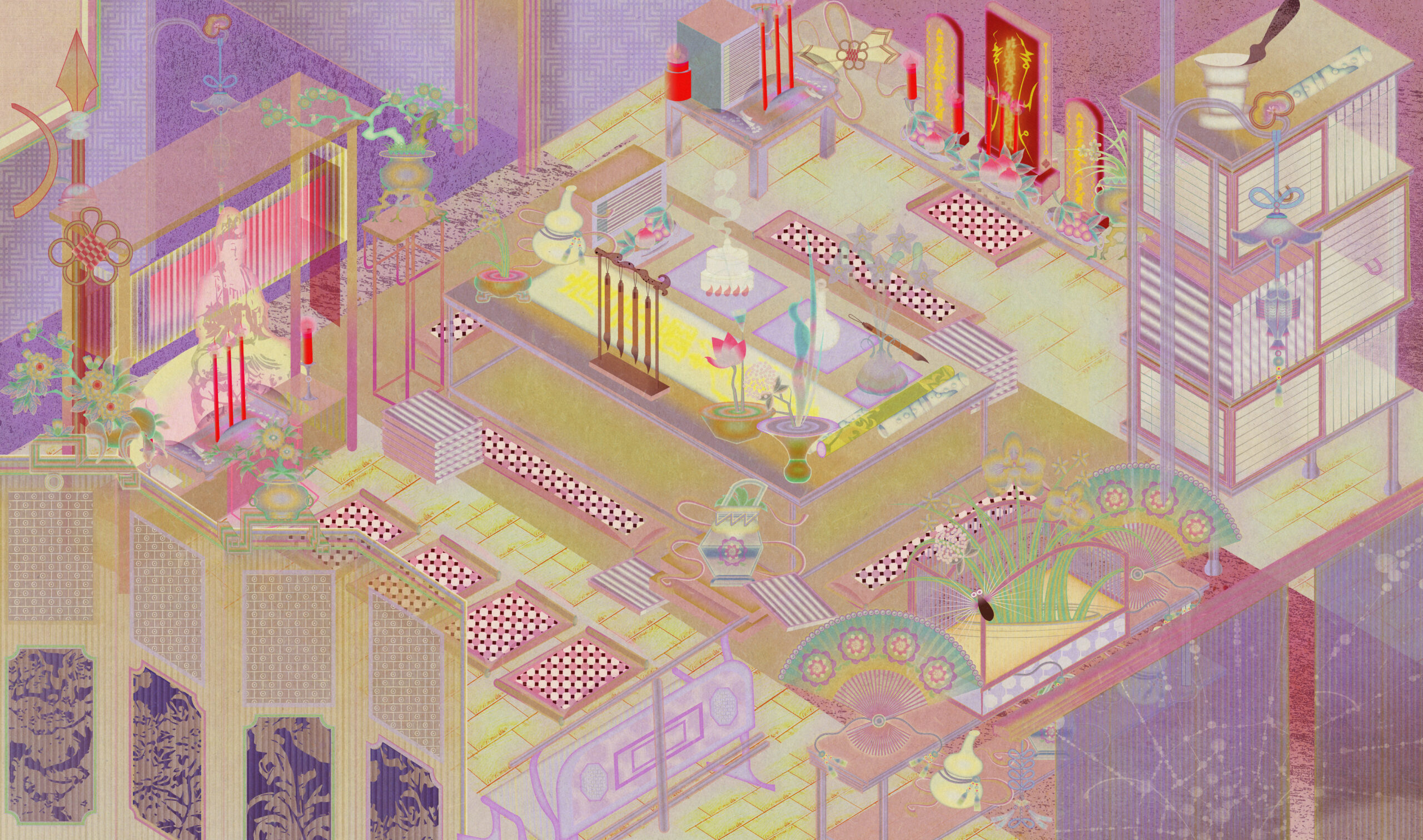GAO YU: UNREALITY
| May 10, 2013 | Post In LEAP 19

From left: Dadaists Meeting, Slay the Dragon
When it comes to Gao Yu and his paintings, there has been a cacophony of voices and opinions, both praise and criticism tightly bound to the concept of cartoon. It is undeniable that Gao’s recognition in contemporary art circles is closely connected the cartoon as a cultural phenomenon. Until just before the 2008 global economic crisis, the then-hot new visual style was a favorite label of curators and critics when describing the practice of a generation of Chinese artists— those born in the mid-1970s and thereafter. This reviewer once chanced upon a childhood drawing by a young painter born toward the end of the 1970s, the subject of which was Transformers. While the concepts and language of this artist’s other paintings had nothing to do with cartoons, he too was heaped in with the rest— an unfortunate designation of the market. Intriguingly, in the aftermath of the 2008 economic crisis, fewer and fewer people discuss the “cartoon” concept. No longer, even, do the students at Sichuan Fine Arts Institute, alma mater to Gao, flock to the cartoon style like a pack of wild ducks. And so, again facing new works by the former representative of the entire cartoon movement, perhaps the critical gaze can calmly return to an examination of the artist’s actual practice, instead of fashioning a celebrity out of the framework of youth culture.
When compared to Gao Yu’s debut works, the paintings of “Unreality” reveal no fundamental change to the forms and perspectives through which Gao’s concepts earlier took shape. He continues to persist in engaging the outside world in conversation. Consider the subjects of a few paintings from the exhibition: Mao Zedong’s famous treatise, “The Foolish Old Man Who Removed the Mountains”; the traditional Chinese tale of “Great Yu Controls the Waters,” which is closer to myth than history; and an homage to Feng Zikai’s classic cartoon, A Corner of the Tea House, with its implied admonition of “Don’t Speak of National Affairs.” Gao is borrowing the past to mock the present, and using historical perspective as contrast against longstanding abuses within contemporary society. The limericks that appear throughout the paintings more closely resemble textual annotations that Gao is making about reality. Yet while storytelling remains an important characteristic of Gao’s painting practice, this exhibition signals a subtle shift in the preferred description of Gao’s visual style. Whether it is his interview in the catalogue or the press release, Gao is being rebranded as one of China’s second-generation Pop artists. Granted, Pop Art affords Gao’s painting practice a historical perspective and discursive capacity far greater than just cartoon allows, and visually, is a more appropriate comparison. But it must be said that the Pop element in Gao’s paintings is only a visual flair. In terms of Gao’s narrative abilities, the viewer would find that Gao’s relationship to Pop is purely utilitarian, the goal being to establish at the outset a compelling mode of idea transmission. Once the linguistic representation of the painting is removed, Gao’s realist approach reveals itself intact.
This review does not question Gao Yu’s realist creation. It simply doubts whether these paintings can effectively carry out the exhibition’s theme of “Unreality.” These paintings obviously were created following a strict visual production process, which requires the works to stimulate the senses, and also to possess intense texture at close range and rich visuality. Obviously, these materialistic visual characteristics will pander to the fetishistic psychologies of certain viewers. Although to be aesthetically pleasing does not signal political incorrectness, the stance of “Unreality” hides a political correctness, which when coupled with an attractive visual and then brought back into the realist system, seems to turn all that serious thinking about reality into nothing more than interesting expression. (Translated by JiaJing Liu)


